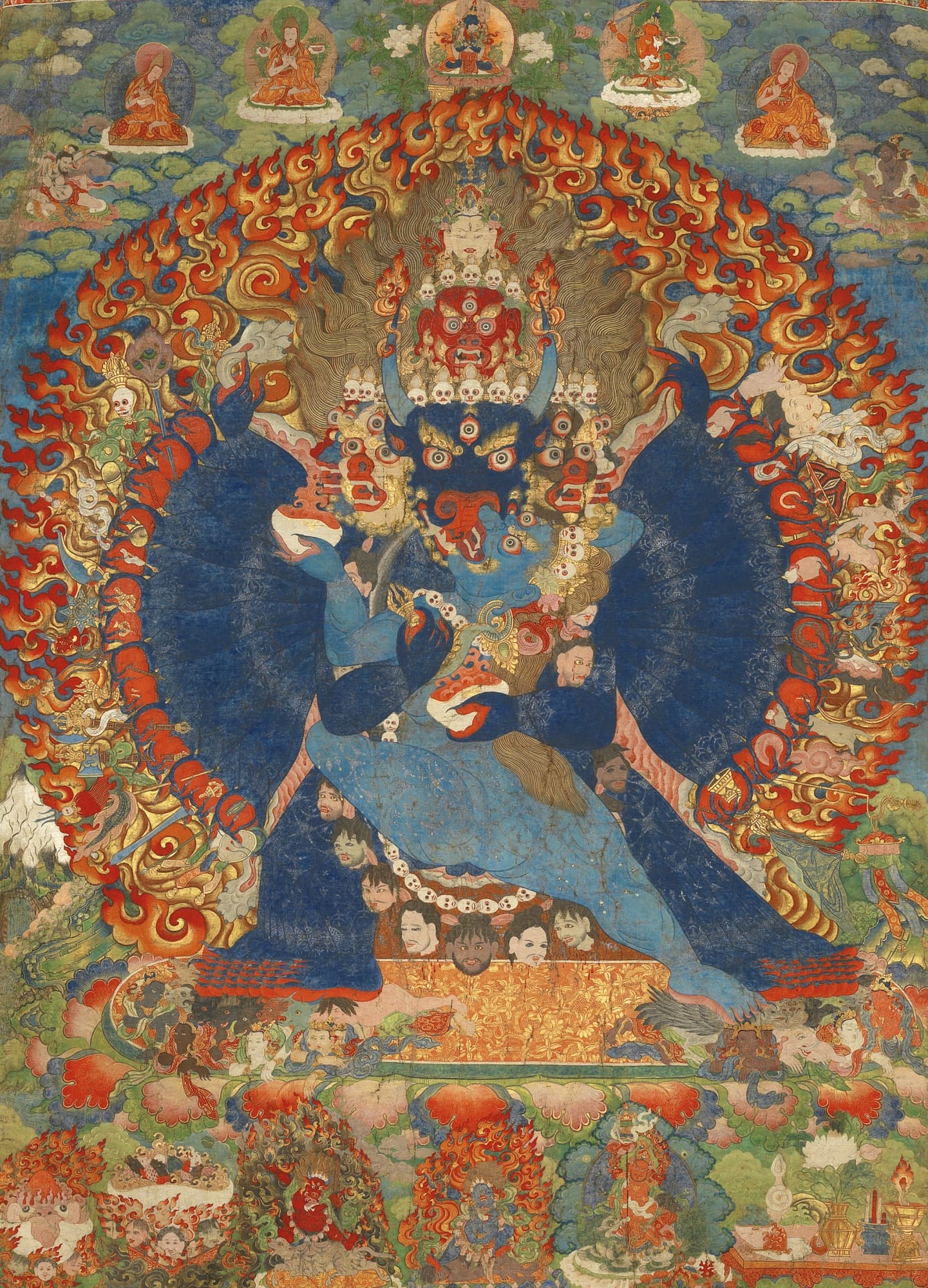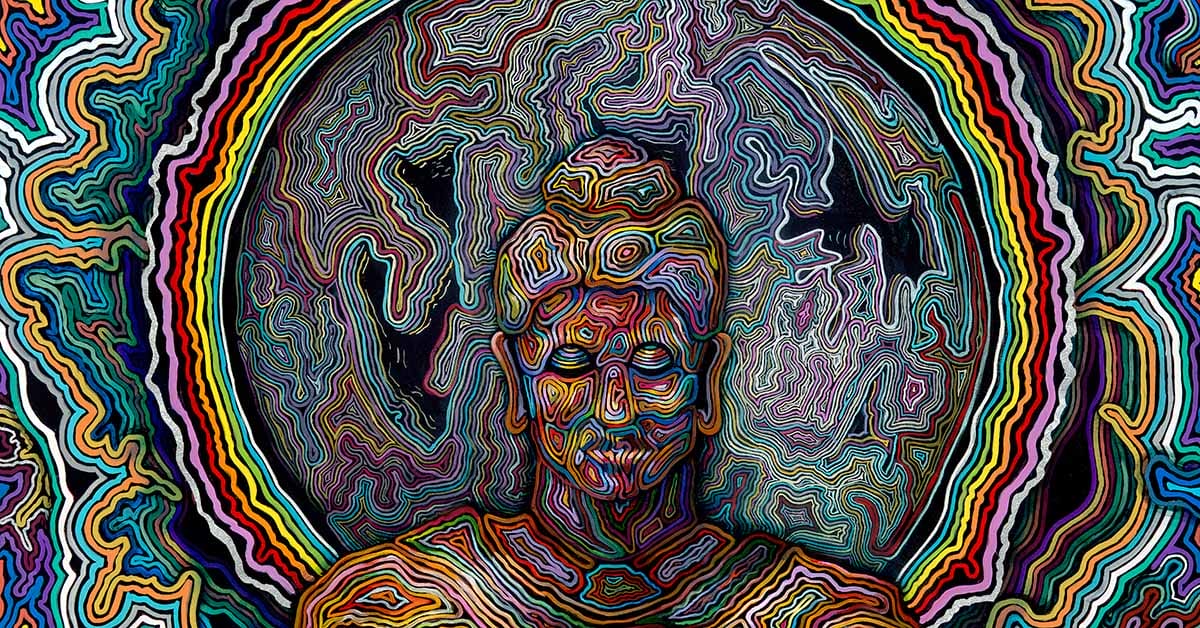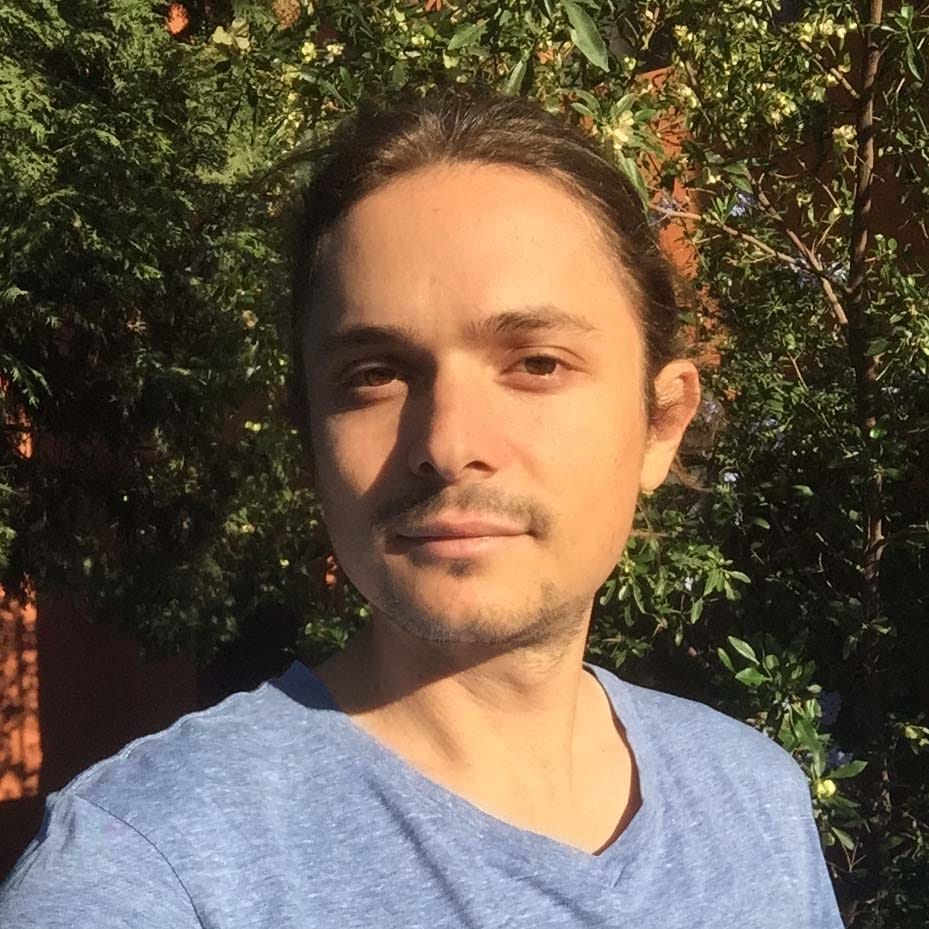There is a thread that runs through the backbone of both spiritual and aesthetic insight. Individuals who undergo such moments seem to have experiences with certain characteristics in common, some of which include: a deep sense of understanding, a revelation of authentic essences, and an awareness of wholeness both in our world and in ourselves. Throughout our history, human beings have explored these visionary experiences and the links between them through artistic, spiritual, and religious expressions, but modernity has ushered in new opportunities to look at the vast range of works and reacquaint ourselves with their forms, perhaps even allowing us to uncover new aspects and interpretations of them.
From this vast range of expressions, the artistic oeuvre of Buddhist traditions and the works they have inspired is of particular interest because of the emphasis they place on the inner world and their associated practices for introspection. These relate intimately and extensively to the type of experiences that produce psychedelic visionary art. Such a topic is of course a significant undertaking but even in the space of a brief article, we can explore some of the interesting examples available, as well as the intersections between them.
Aesthetic and Mystical Experience as Transductive Device
The artist as well as the mystic converts inner, concealed experiences so that they become accessible for the listener, audience, viewer, and so forth. They transform their perceptions of something necessarily residing within their subjective, phenomenological field and express them so that the meaning and perhaps the truth of their experience can be shared and communicated.
In the new edition of Zig Zag Zen: Buddhism and Psychedelics, artist Alex Grey describes how “Visionary mystical experiences are humanity’s most direct contact with spiritual reality and are the creative source of all sacred art and wisdom traditions.” He also notes the similarity between the meditative state arrived at by dedicated Buddhists and the kind of vision that many artists have experienced by utilizing entheogenic or psychedelic substances. Grey observes that those familiar with the psychedelic experience might recognize the representations of the physical world and the subtle visionary beings exemplified in the geometrically dense mandalas characteristic of Buddhist artistic traditions.
The Buddhist Experience of Transcendence as Depicted through Visionary Artworks
A core tenet of Buddhist practice is to utilize meditation, mindfulness, and one’s own conduct so as to gain freedom from the pain and confusion that we invariably experience in our lives. In the Dhammapada, a collection of sayings of the Buddha we find phrases such as “Dwelling in the cave (of the heart), the mind, without form, wanders far and alone. Those who subdue this mind are liberated from the bonds of Mara.” Mara here refers to the bondage of passions, ill will, and ignorance that we experience in life. This liberation attained by those who “subdue” or “control” their mind often produces an experience of transcendence from mundane existence and has been the focus of many Buddhist artistic traditions.
Tibetan and Nepalese Thangka paintings are works that represent Buddhist iconography and which are notably used as tools for meditative practice. In another essay from the same collection entitled “Buddhism, Shamanism, and Thangka Paintings”, anthropologists Claudia Müller-Ebeling and Christian Rätsch describe how “both the production and contemplation of a thangka help one to visualize the universal principles of life, represented in Buddhist (and Hindu) deities, bodhisattvas, and other beings.” These richly composed artworks are in some sense used as portals for practitioners to enter the numinous world lying beyond our quotidian perceptions.

Thangka Depicting Vajrabhairava, ca. 1740, Sotheby’s via Wikicommons
In the book, Secret Drugs of Buddhism: Psychedelic Sacraments and the Origins of the Vajrayana, author Mike Crowley takes an in-depth examination of Buddhist history, traditions, and iconographies to find evidence for the historical use of psychoactive substances during rites, ceremonies, and meditative practices. His compelling claims center on the mysterious substance amrita, a term first found in the Rigveda, and which became important to the traditions of Vajrayana Buddhism. Amrita is described as conferring immortality to those who drink it. His work indicates that orthodox interpretations of these terms have failed to understand the real possibility that these substances were more than merely symbolic devices, and perhaps corresponded to several psychoactive plants found throughout the Indian subcontinent and surrounding regions. It becomes clear from his exposition how the substances referred to in these ancient texts could have played an important role in the liberation that these traditions sought through their practices.
Psychedelic and Buddhist Visionary Art as a Paradigm Breaking Aesthetic
The revelatory nature of Buddhist artworks relates closely to the function of psychedelic visionary art. Grey writes of how “the best currently existing technology for sharing the mystical imaginal realms is a well crafted artistic rendering by an eyewitness.” From our contemporary vantage point, we stand as the beneficiaries of millennia of practices of this kind, and we have the opportunity to survey expressions that reveal the subtle forms lying behind countless artistic and/or mystical iterations.
The expressions produced by such experiences reveal how we utilize symbols and gestures to allude to fundamental realities that we encounter, but they also point toward that which cannot be grasped by our limited capacity for lucidity and communication.

